


Can brands speak the ‘bro code’?
share on
As a woman, I admit we are complicated creatures. But are men today any easier to handle? When it comes to brands, they may not be.
A recent study by Nielsen on Millennial males tallies with this view, stating that Millennial males today, in theory, are elusive creatures. Moreover, with the evolving role of women, and the rise of the she-conomy, it comes as no surprise that men have been forced to make room for women in a largely patriarchal society.
Shahvez Afridi, who is the head of strategy looking after all of Grey Group’s strategic thinking on the Procter & Gamble account in the Asia Pacific, is of the view that with the rise of female domination, men may be feeling the threat of losing their masculinity.
He explains that with the influx of educated women entering the workforce, and outshining their male counterparts, there is pressure on men with the changing gender roles.
Also, with the increasing focus put on society for gender rights and equality, much of the advertising and communication strategies today for companies have become more gender neutral where brands are engaging with people as humans and not necessarily male or female.
Afridi argues this is where the opportunity lies for brands to help men “reclaim” their lost territories.
“Somewhere deep down, there’s a sense of losing their old manly ways. They want to reclaim their ‘tribe’, be one of the boys. There seems to be a weekday routine that’s all about success and achievement, and on the weekend it is all about ‘going back to the old ways’ of being with the boys, enjoying sports and having a beer,” he says. The best way to target these men is to leverage this dichotomy.
Recently, Gillette India was one brand that played up this notion of bringing manliness back to men. Being the market leader for shaving products in India, the brand wanted to get Indian men to trade up to Gillette’s premium systems line of razors, such as Fusion and Mach3 to generate greater revenue per user. To do so, the brand leveraged on its strong involvement in sports.
With cricket fever in India sky high this year with the World Cup 2015, Gillette decided it was the perfect time to get in on the action. India, being the champions in the last World Cup, had more than a billion people looking for an encore.
“Historically, Gillette has always been about the sport and the sports celebrity. But this time the mood in India was different,” he says.
“A somewhat Socratic piece of investigation with men led us to two fundamental truths about cricket in India today. One was with the retirement of demigod, and arguably the best player the world has seen, Sachin Tendulkar, it wasn’t about hero-worship anymore, all the players were more or less seen as equals. And two was that this World Cup wasn’t really about the players or the cricketing heroes, it was about the common men, the fans.”
Now, if this World Cup was going to be about the common man – the fans, the brand needed to give the audience something tangible, something they could hold and use as a symbol of their spirit and passion.
The first thing it did was create special edition Gillette Fusion and Mach3 razors with the word India engraved on the handle. The products also proudly displayed the country’s colours on them to encourage cricket fans to continue extending their relentless support for the Indian team.





Following that, rather than celebrate the sport through the sportsmen or a sport celebrity, Gillette celebrated the sport through the unequivocal passion of a commoner, the ultimate fan.
It changed its decades-old tag line “The best a man can get” to “The best a fan can get” to celebrate the passion of the fans. The brand also created an online video of a first-person account of a diehard cricket fan, who did not give up “watching” cricket even after he turned blind, when hit with a ball on the cricket field.
(Please take images from video)
The ad saw tremendous success with total YouTube viewership being more than 2.92 million and having more than 3000 shares. In just six days, its YouTube viewership grew to more than 2.5 million, making it one of the fastest growing content online in recent times.
The video also started trending on social media within two days of the launch, receiving likes from cricket legends, celebrities and the marketing fraternity, including Sanjay Manjrekar (former cricketer), Harsha Bhogle (cricket expert and commentator), Atul Kasbekar (celebrity photographer), Anant Rangaswami (editor, CNBC-TV18), Sachin Kalbag (editor, Mid Day) among many others. On Twitter it generated more than 204,000 Twitter impressions and more than 3000 mentions.
Ultimately, this resulted in total free media earned in PR worth US$5.7 million.
Locally in Singapore, another brand that also actively uses sports in its targeting of the male consumer is Volkswagen. The brand is known to zoom in on focus areas of interest for men such as health, technology and, of course, sports to engage deeper with the male audience. Last year it also partnered with organisations such as the Football Association of Singapore, the Singapore Swimming Association and the Liverpool Masters Team.
In 2014, when Volkswagen Singapore decided to sponsor the Singapore Swimming Association, its managing director, Steffen Schwarz was quoted on the Sports Singapore site saying that globally Volkswagen has always been a strong supporter of sport. While a car brand may not be the first association one makes with swimming, Schwarz explained that Volkswagen Singapore’s position as the official car partner of the Singapore leg of the FINA/Arena Swimming World Cup in 2013 helped enhance its brand image. Sport is a corporate priority of Volkswagen Singapore.




Meanwhile, a Nielsen study done last year called The Female/Made digital divide reiterated the fact that sport was one of the themes that greatly resonated with male audiences. Other things that resonated with male audiences was car themes, high energy or action themes and, of course, sexual themes. Simply delving into sport to target the male audience is not enough.
Deciding your move
Geoffrey Pickens, segment director of men’s and shave prep for APAC at Energizer Personal Care, says that for any brand looking to create a dialogue with its male audiences, the first step would be to figure out what is its consumers’ pain point. Whether or not this should be done through communications strategies bringing back manliness to its customers depends on the brand’s DNA, he says.
For Schick, the brand discovered that men often find shaving a stressful process and do not actually enjoy it because of the cuts and bruises. The brand took that as a starting point to figure out how it could make the process a less burdensome one for its male audience while keeping true to its own brand DNA. Through its research, it discovered that while men are different market to market in their tone and manner and even what they find masculine, there are some commonalities that run across all markets.
Speaking the male language
Humour is one of them.
“Humour generally works well with men and it can be played in a masculine way without being stereotypical or offensive. We aren’t complicated creatures,” Pickens says.
For Schick, it is vital the brand comes across as approachable and real. Once a brand is able to speak the language of the everyday man, it gains brand affinity with its target group. Ultimately, this leads to high consideration at the point of purchase.
“As a challenger brand, we have often had very high awareness on the Schick name, but not affinity and consideration when purchasing the product. But if a man has a good experience with the brand, even if not directly shaving, but maybe through humour we some how helped him relieve stress, then he will relate to our brand,” Pickens says.
He adds the “male language” can also be dominated by facts, numbers and precision.
Using the example of directions, he says that many studies have indicated that while women give directions using landmarks, men are more prone to do so with estimated distances and words such as “north” and “south” because they are more fact based.
This is why, many times, ads targeting men are dominated with facts and numbers and precision – a language that resonates better with men than emotions.
“It is not that men don’t have emotions, but they are more comfortable on using facts and precision in their communication strategies.
Brandon Tay, brand executive of Volkswagen Singapore, seconded the notion adding that despite Singaporean male audiences making rational decisions on car purchases, they are still attracted to cool new technological features such as driver assistance systems, direct-shift gearboxes and touch-screen driver interfaces. At the end of the day, boys still love their toys.
Hence, in its communication strategies, the brand often highlights these features to really resonate with performance-oriented males. He adds that often car brands play up on these precision factors in their ads because the majority of car drivers and owners in Singapore are male.
Does sex still sell?
According to Nielsen’s study “The Female/Male digital divide”, sexual themes were noted as the top four themes that resonate with men. Despite the strong fight many women’s rights groups have put out for gender equality, sex still sells in advertising. Brands such as Carl’s Jr, Axe and Björn Borg actively play up sexual themes to resonate with their audiences.
Pickens explains this procreation and sexual tension can be displayed in ads from the protagonist touching his own skin or someone else touching his skin.
Jian Yang, head of content at OMD Singapore, however, argues that sex is losing its novelty and does not really sell anymore. Emotions and logic do.
“With the mainstreaming of literature such as Fifty Shades of Grey, and the R rating, losing its novelty, the playing field seems to have levelled. We can’t blind side a man with cleavage anymore. This means a product has to either stimulate his problem-solving side or his emotional side,” he says.
One brand that uses sex along with tongue-in-cheek humour in its communication strategy is Swedish underwear brand Björn Borg. The brand’s target audience is city living fashion-conscious men aged 20 to 30.
However, marketing director Jonas Lindberg Nyvang says its communication strategy is one which is used to target both men and women. The brand currently does not have a differentiated strategy for marketing to men and women despite sales showing 50% of its consumers are also women.
He says that in countries such as Sweden, male consumers are fast taking on metro-sexual roles and are looking to brands to display equality rather than masculinity. Particularly in Sweden, he adds, men do not want to be seen as macho and without feelings, but rather be looked as humans with real emotions. He also explains that in the Northern Europe region people are much more concerned with vanity and grooming and this is a trend growing in the fashion-conscious minds of European men.
Pat Law, founder of GoodStuph, also agrees that while there are definitely still a lot of “run-of-the-mill” ads catering to the notion of “boys will be boys”, today there is a clear evolution of the modern man. Men today are more unapologetic when it comes to using grooming products. Vanity in men has become highly acceptable.
“The last beer commercial I saw didn’t include a scantily clad woman running down the beach in slow motion. I think that’s a good thing. Men are indulging in their vanity more, and not being apologetic about it,” Law says.
Moreover, brands such as Carlsberg have also only recently made a move into beauty products claiming that men do care about looking good, but they often seem to lack alternatives to the more female-friendly beauty options available.
Ways to attract
Nielsen’s study “The men, the myths, the legends: Why Millennial ‘dudes’ might be more receptive to marketing than we thought” deems this group “cord cutters” who cannot and in fact, do not want to be reached. Yet marketers today remain eager to reach this young and digitally savvy bunch – and rightly so.
Millennial males, according to the study, are often perceived as innovators, trend starters and predictors of the next big thing.
In the US, these young lads have immense spending power with the purchasing power anywhere between US$125 billion and US$890 billion annually. Other estimates, according to the Nielsen study, attribute these young shoppers with US$200 billion of direct buying power plus an additional US$500 billion in indirect influence.
So how exactly should one target the rising male shopper today?
One way to go about doing so is by igniting his sense of discovery, explains Yang. While hunters in the past used to venture out to the wild to understand the world they lived in, today in the digital era, this understanding happens indoors with the help of the internet.
Male consumers today are much more research oriented because of the changing media landscape. Consumers today are no doubt bombarded with ads and product choices from mainstream media, BTL channels, recommendations and editorials and are forced to make decisions. Simply put, he now explores and hunts down the best deals through research online to make the most informed decision.
According to a study in 2012 by iProspect in the US, the affluent male, defined as over the age of 18 with a household income of US$100,000, is doing significant research and buying online.
All but 2% of the affluent males surveyed purchase products online. An overwhelming 70% prefer to research and buy online, versus researching online and purchasing in store. The study also advises that brand marketers use a mix of research-driven and direct response messaging, combined with appropriate goals and measurement criteria, to see the best results.
“He may not realise this though, since we call it ‘surfing the net’,” Yang says. “However, he is actually researching and actively forming pictures in his mind on where he is holidaying next, what car he is going to drive and many more.”
And this phase is crucial when you want to lure the male consumer.
Law seconds the notion adding that essentially, when targeting the male consumer, you need to win the consumer over even before the path-to-purchase begins. This is because men, as compared with women, are more specific in addressing their needs. Men generally do not go to a store to browse.
When it comes to communicating to them, the path-to-purchase strategy is not about being there in the path when decision-making happens, but owning the entire path itself, explains Law.
This is where word of mouth and endorsements from a familiar and trusted source is key.
“If a man is looking to go into a store and find a camera, he probably already knows the specifics and lenses he would want to go with it. To get to this target group, you’d need to find ‘a photographer friend’ of theirs they have recently spoken to who has convinced them of the camera to purchase,” Law says.
Only by getting that source to endorse your brand can you successfully bring over to your side the male consumer.
“That is the hard part,” Law says.
share on
Free newsletter
Get the daily lowdown on Asia's top marketing stories.
We break down the big and messy topics of the day so you're updated on the most important developments in Asia's marketing development – for free.
subscribe now open in new window

